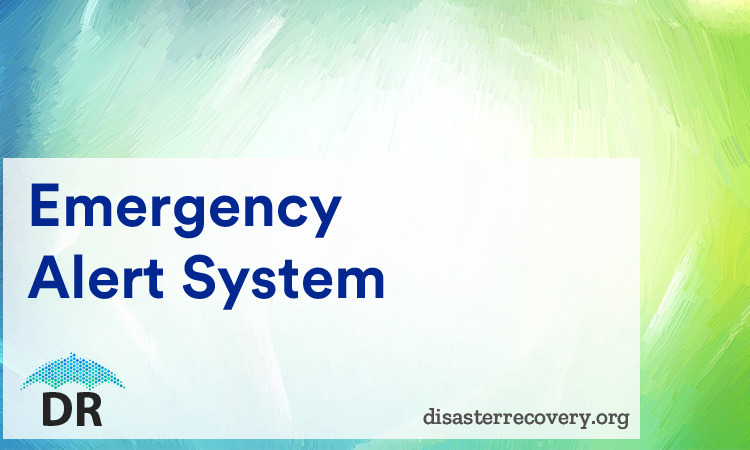Emergency Alert System (EAS) is a national public warning system that provides the U.S. President with a communications capability to reach out to citizens within ten minutes of a crisis situation. Messages are transmitted through satellite digital audio services, direct broadcast satellite providers, cable television systems, wireless cable systems and so on.
Emergency Alert System (EAS)

The various service providers can send and receive emergency related communications. Programs can be interrupted if required and messages can be transmitted in non English languages as well. The EAS can also be used to transmit critical local emergency information between various radio and television stations within the state.
Wireless Emergency Alerts can be received from the following sources:
- State and Public Safety Officials
- National Weather Service
- National Center for Missing and Exploited Children
- President
They are short alert messages of not more than 90 characters that come with a unique sound and beep that are repeated twice during transmission.
Alerts are broadly classified into three categories:
- Amber – When efforts are underway to rescue a child that has been kidnapped.
- Imminent Threat Alerts – During natural calamities such as hurricanes, earthquakes, wildfires and so on.
- Presidential Alerts – President declared national emergencies.
Cell phones can receive WEA messages depending on the brand and model of the mobile phone. WEA notifications enabled phones usually come with its standard logo on the package. You can also check with the salesperson regarding the feature. WEA notifications might have to be enabled if the cell phone you are using is an older model.
Nationwide Emergency Alert Testing
The infrastructural capabilities of the Emergency Alert System and Wireless Emergency Alert system to distribute a nationwide emergency message will be tested this month on September 20.
The system will be tested for approximately one minute at 2:20 pm, eastern daylight time by broadcasting the following message:
“This is a test of the National Emergency Alert System. This system was developed by broadcast and cable operators in voluntary cooperation with the Federal Emergency Management Agency, the Federal Communications Commission, and local authorities to keep you informed in the event of an emergency. If this had been an actual emergency, an official message would have followed the tone alert you heard at the start of this message. A similar wireless emergency alert test message has been sent to all cell phones nationwide. Some cell phones will receive the message; others will not. No action is required.” (Source: https://www.fema.gov)
This is the fourth test conducted by EAS in the last 7 years. The previous tests were conducted in 2011, 2016 and 2017.
The Wireless Emergency Alert message will be tested on the same day a couple of minutes earlier at 2:18 pm, eastern daylight time, with the following message: “This is a test of the National Wireless Emergency Alert System. No action is needed.” (Source: https://www.fema.gov)
Need for Improvement
The 3rd of October has been reserved as an alternate date for the tests. The tests are being organized by the Federal Emergency Management Agency (FEMA) and Federal Communications Commission.
Recent Failures
- Failure to inform the local community well in advance during the California wildfires in the month of August cost the lives of three people.
- Earlier this year in January, a false alarm that warned of a ballistic missile going to strike Hawaii threw the island into a state of panic and distress before the threat was discarded as false nearly forty minutes later.
- The Wireless Emergency Alert system failed to send out alerts on July 25, the day the Cranston fire broke out, due to a technical glitch.
Government authorities have gone on record many times to state that the alert systems that are currently being used in the country are outdated, inconsistent and need to be upgraded drastically.
The tests scheduled for September 20 also aim at addressing the following issues.
The tests scheduled for September 20 also aim at addressing the following issues.
- There is no standardized notification system in place. State and local agencies manned by novices with little or no formal training to alert the public during emergencies.
- Many times, alert notification tasks are outsourced to third party units. This leads to a high probability of human error and the propagation of inaccurate information during crisis moments which can lead to gross inefficiencies.
- When alert notifications are delayed, the local community loses precious time in evacuating the locality. This usually puts a huge strain on preventive measures, making execution chaotic and challenging.
- Delayed alerts have also hampered the local authorities’ and community’s efforts to minimize the extent of damage during natural disasters. The country suffered more than $300 billion in losses due to damages from various calamities in 2017.

